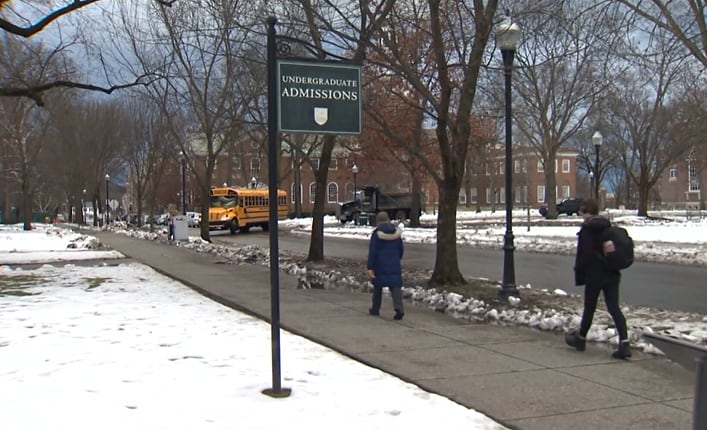BURLINGTON, Vt. (WCAX) – National College Decision Day is less than a week away, on May 1. With more options for binding commitments and a developing online landscape, the admissions process is ever-changing.
For the majority of colleges, May 1 is the deadline for accepted students to make their final pick of where they’ll go to pursue their degree – a process that’s changed drastically over the years.
These days, applying for colleges starts well before 12th grade.
“I took the ACT, started testing and trying to get a sense of where I wanted to go. And then over the summer junior year into senior year, I wrote like just a million essay drafts for the main common app essay,” said Moorea Lambert of Colchester.
Lambert was accepted into her dream school, Northwestern University. She applied early decision, which binds a student’s commitment upon their acceptance.
“Ultimately, I felt like if I get one chance to get in, I had to pick one and apply it early,” she said.
Beyond early decision, high school seniors are faced with a number of other options when applying.
Early decision 2 is a binding admission program with a later deadline, early action is a non-binding plan that offers an early admission response, and regular decision is the most traditional option.
Alice Lissarrague is a private college counselor who also counsels at the Lake Champlain Waldorf School, helping roughly 35 students a year. She says half her students applied early decision.
“These schools are typically filling 60% of their classes through the early decision rounds. So that is something to consider. You need to figure out that it’s going to work for you financially before you apply,” said Lissarrague.
A difference in the admissions process that Lissarague has noticed is the Common Application, which allows one application to be sent to dozens of schools. In a post-COVID world, schools are taking advantage of online tours and outreach.
“They just broadened their reach. I think the fact that certainly with so many schools, the vast majority test-optional, that absolutely increased the number of applications,” she said.
Lissarrague encourages students to take standardized exams even if their colleges are test-optional, as some slowly revert back to requiring scores. Additionally, she notes that exam scores for colleges are higher because students with better scores are more likely to submit.
It’s a process that is tricky to navigate – especially with financial considerations.
“There’s a lot of support out there. There’s a lot of there a lot of tools to help students. It’s so fraught with anxiety and I think again, you know, with everything on social media and so on, that’s something that I really try to help students protect themselves from and just, you know, focus on what they’ve got to do,” said Lissarrague.
For fellow high schoolers, Lambert says she’s learned everyone’s story is different, and it’s important for students to support one another through a complicated process.
“You don’t really know why someone gets in and why someone doesn’t, or why someone picks a certain school or a different one, and there’s a million reasons, so trying to distance yourself from any kind of like arbitrary judgment,” said Lambert.
Schools still consider GPA and the difficulty of your curriculum. Other factors are coming into play too for some, including a student’s ability to pay or where they live.

